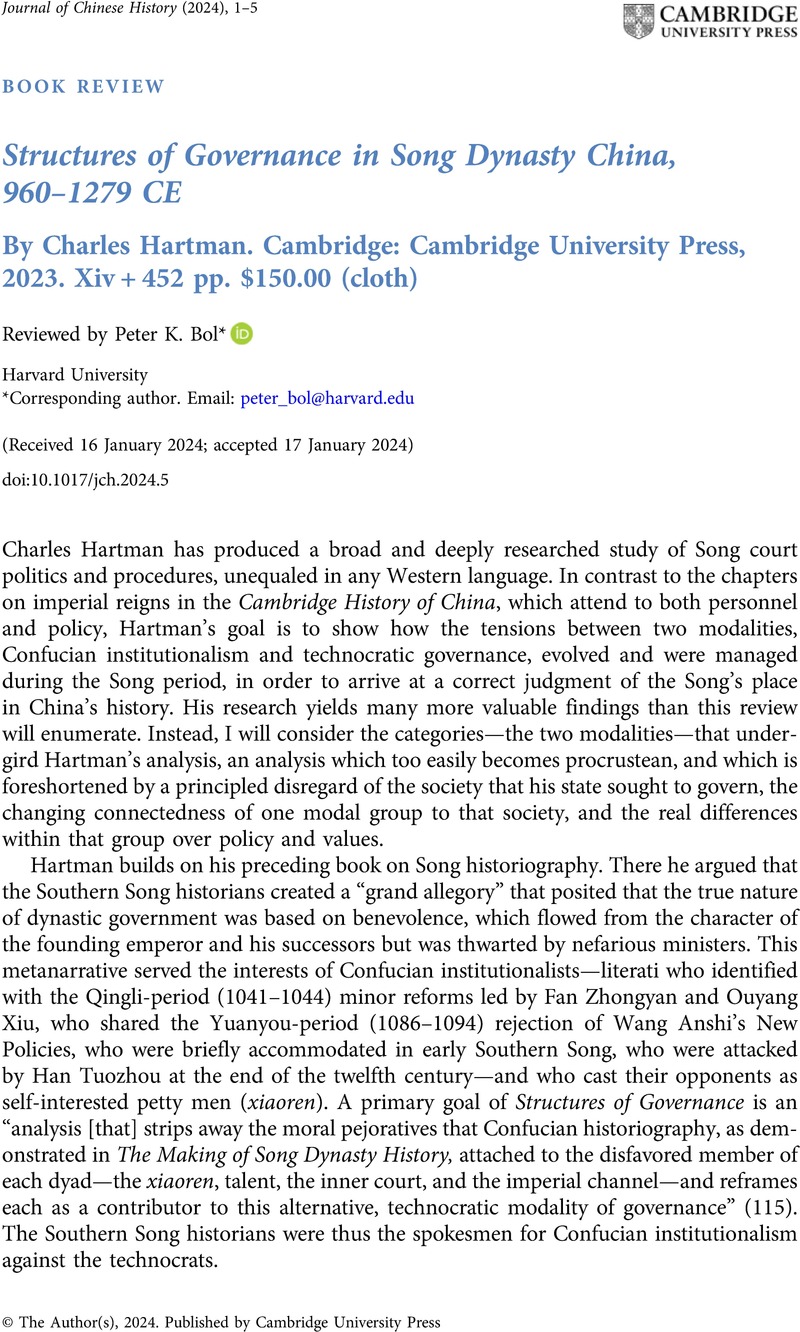No CrossRef data available.
Article contents
Structures of Governance in Song Dynasty China, 960–1279 CE By Charles Hartman. Cambridge: Cambridge University Press, 2023. Xiv + 452 pp. $150.00 (cloth)
Review products
Published online by Cambridge University Press: 12 February 2024
Abstract

- Type
- Book Review
- Information
- Copyright
- Copyright © The Author(s), 2024. Published by Cambridge University Press
References
1 The charts on pages 87 and 94, building on work of Hirata Shigeki, are invaluable. Li Quande's 李全德 study of document administration appeared only in 2022: Xin xi yu quan li: Song dai de wen shu xing zheng 信息与权力 : 宋代的文书行政 (Beijing: Shehui kexue wenxian chubanshe, 2022).
2 Wang, Yuhua, The Rise and Fall of Imperial China : The Social Origins of State Development (Princeton: Princeton University Press, 2022), 220Google Scholar.
3 Hymes, Robert P.., “Sung Society and Social Change,” The Cambridge History of China. Volume 5. Part 2, Sung China, 960–1279 AD, eds. Chaffee, John W. and Twitchett, Denis Crispin (Cambridge: Cambridge University Press, 2015), 526–664Google Scholar.
4 Chen, Song, “Governing a Multicentered Empire: Prefects and Their Networks in the 1040s and 1210s,” in State Power in China, 900–1325, ed. Ebrey, Patricia Buckley and Smith, Paul Jakov (Seattle: University of Washington Press, 2016), 101–52Google Scholar.
5 See, for example, Bol, Peter K., Neo-Confucianism in History (Cambridge,: Harvard University Asia Center, 2008)Google Scholar.
6 Sima Guang 司馬光, “Lun ju xuan zhuang” 論舉選狀, in Quan Song wen 全宋文 (Shanghai: Shanghai cishu chubanshe, 2006), 54.226
7 Kracke, Edward, “The Expansion of Educational Opportunity in the Reign of Hui-tsung of the Sung and its Implications,” Sung Studies Newsletter 13 (1977), 6–30Google Scholar.
8 Tillman, Hoyt C., Utilitarian Confucianism: Ch'en Liang's Challenge to Chu Hsi (Cambridge: Council on East Asian Studies, Harvard University, 1982)Google Scholar and Ch'en Liang on Public Interest and the Law (Honolulu: University of Hawai‘i Press, 1994).





